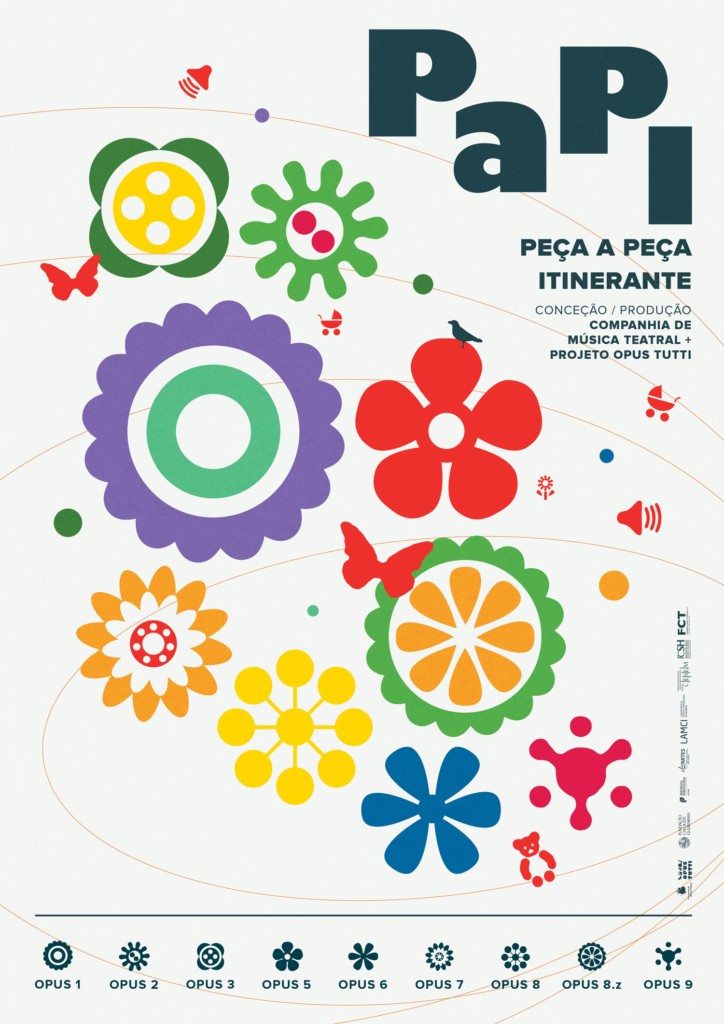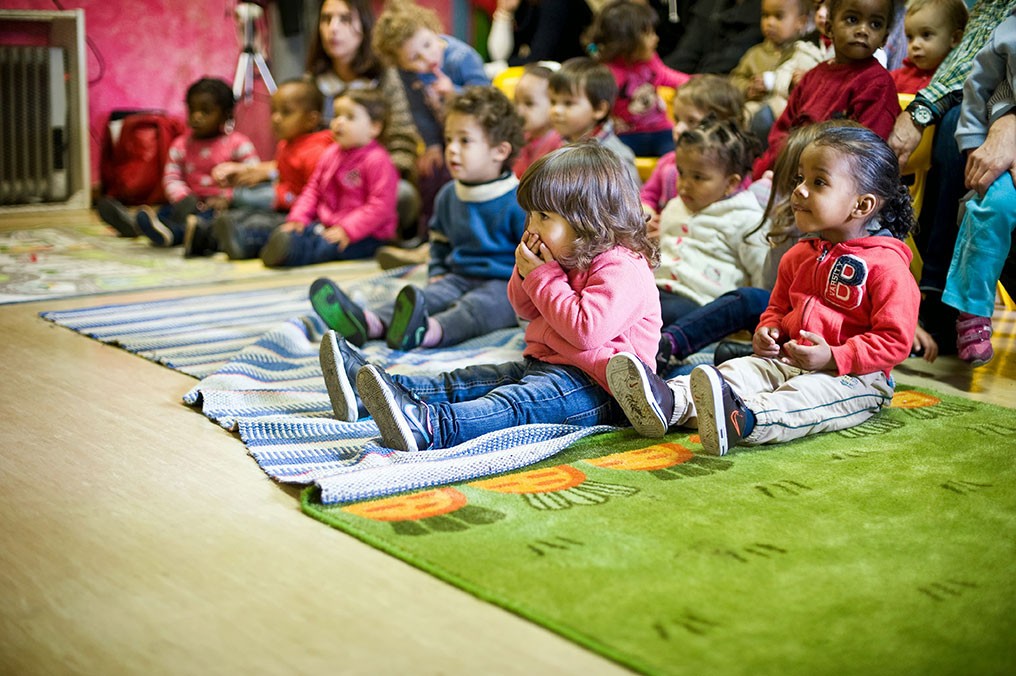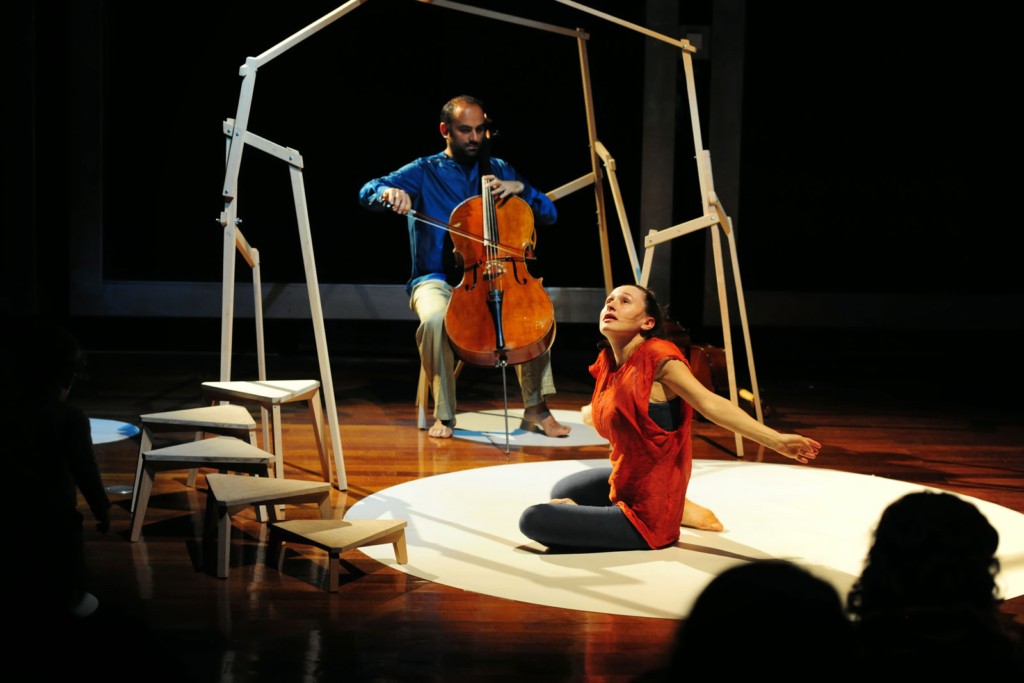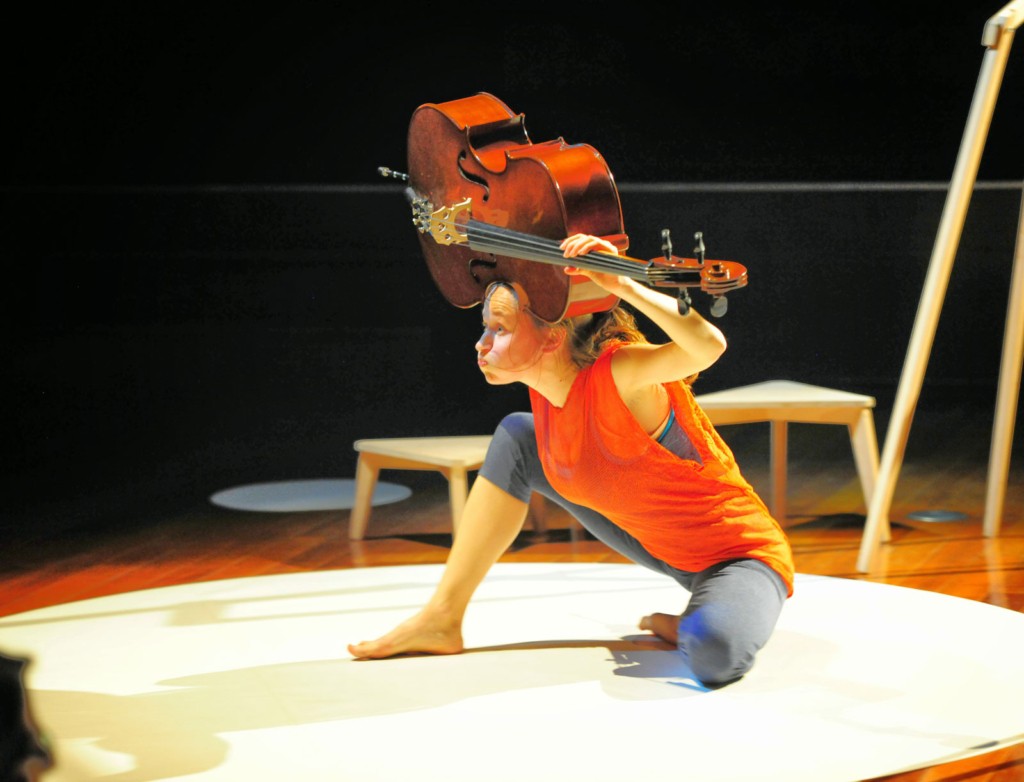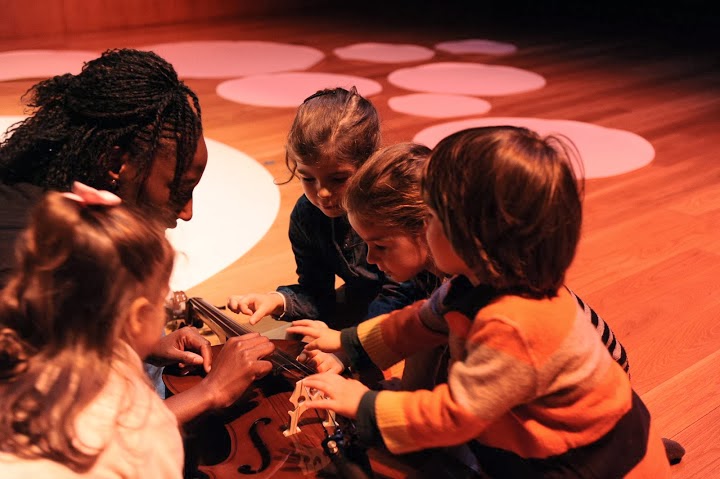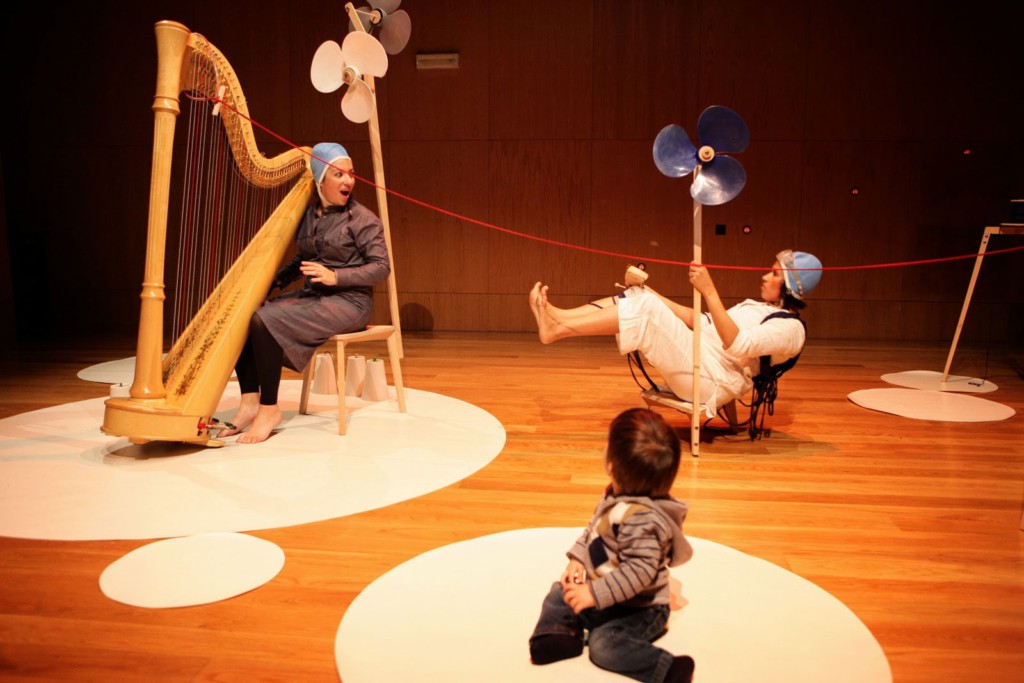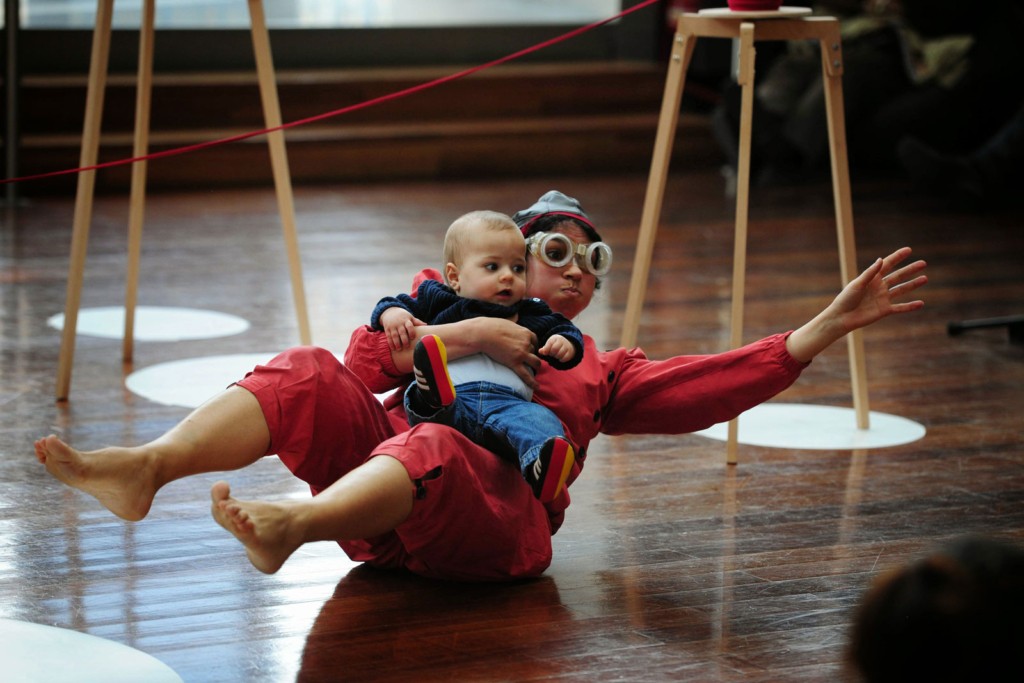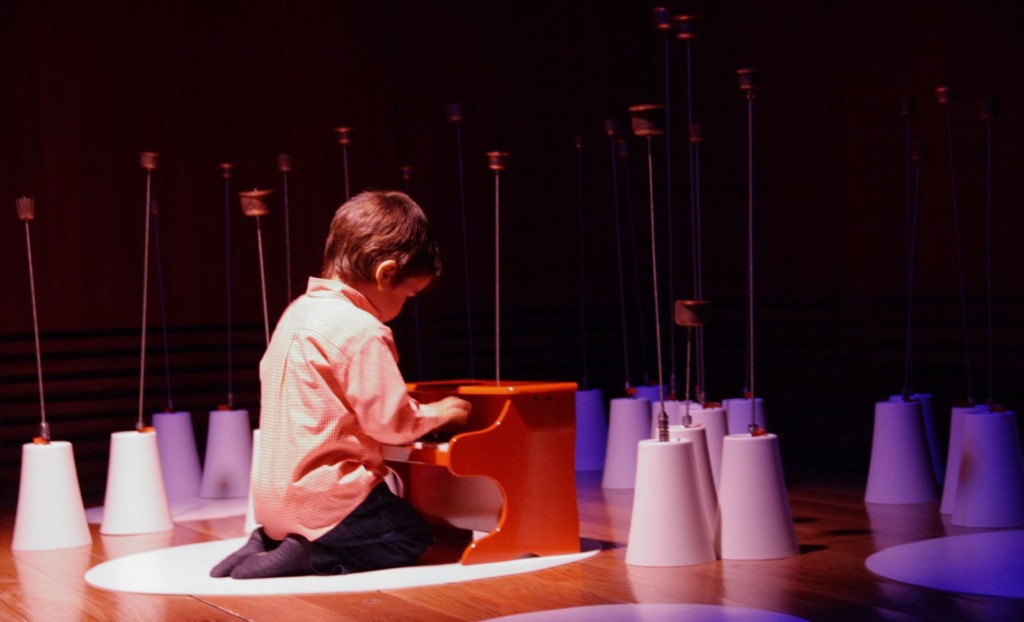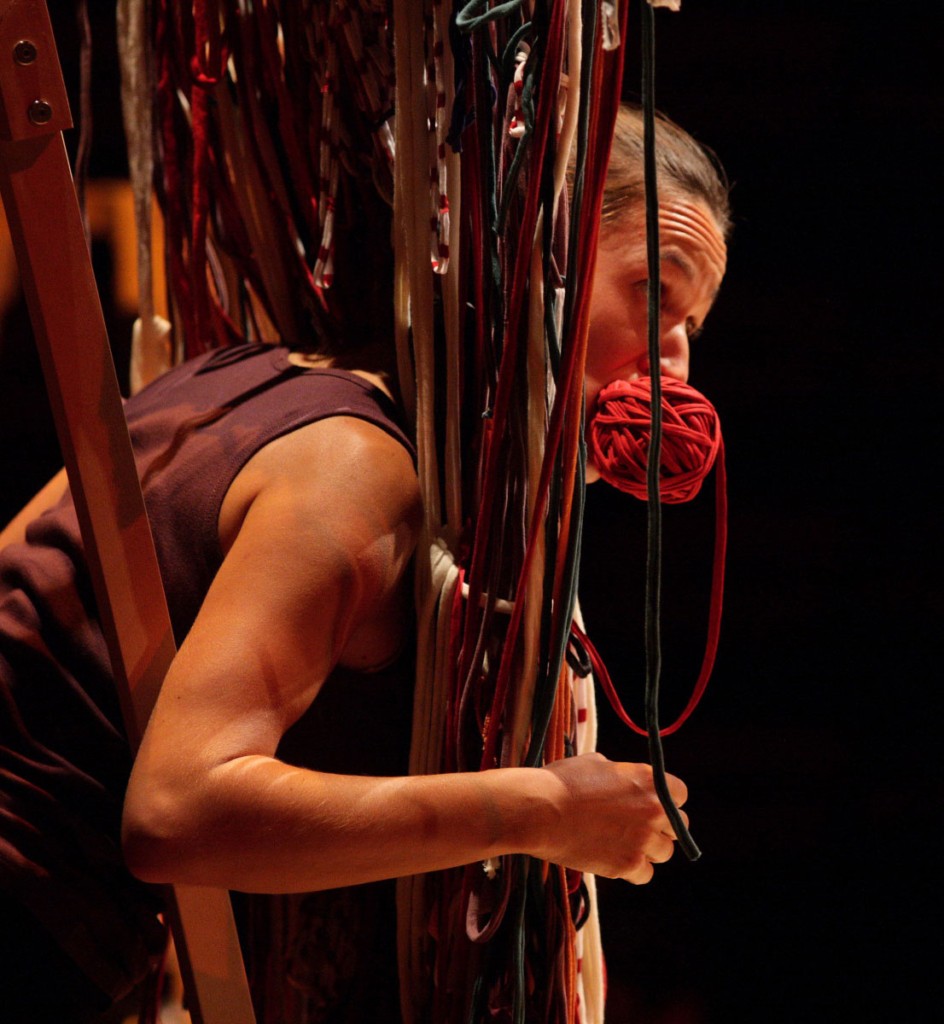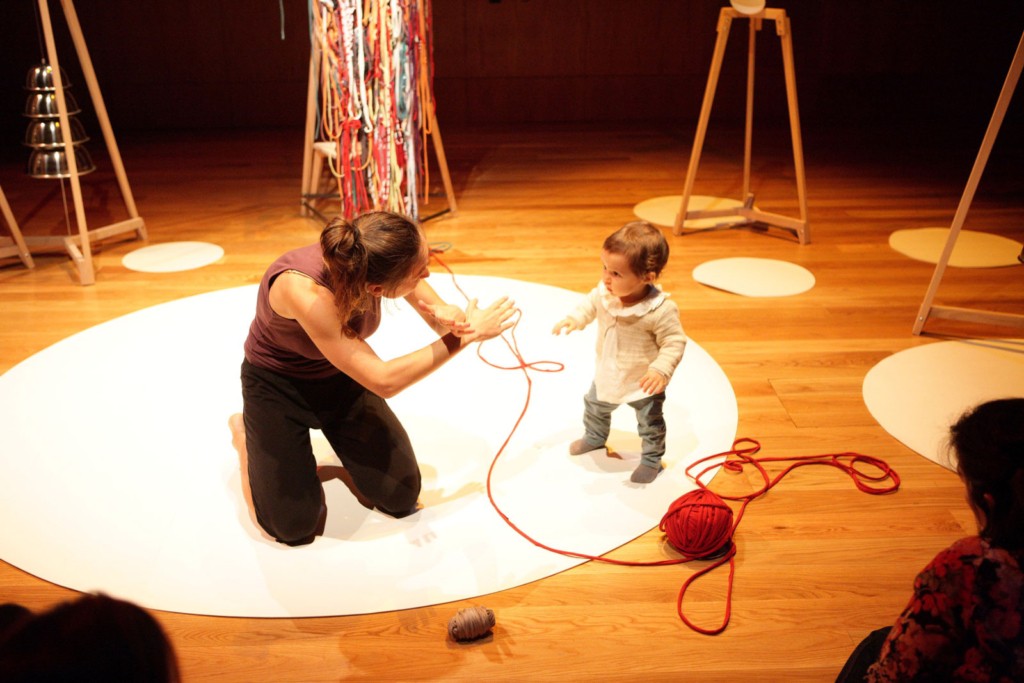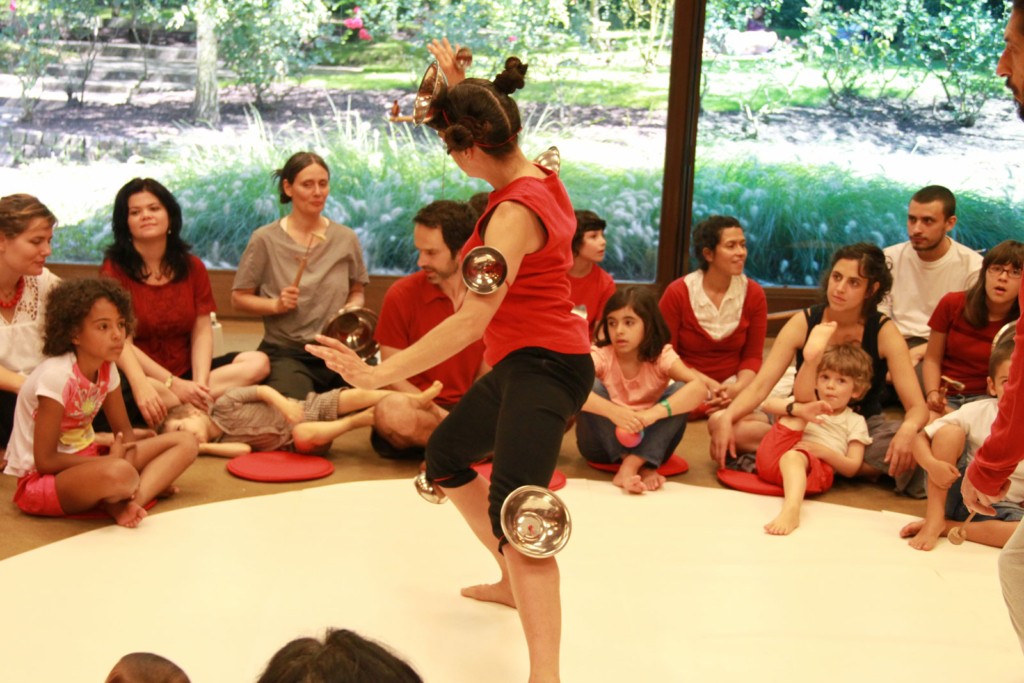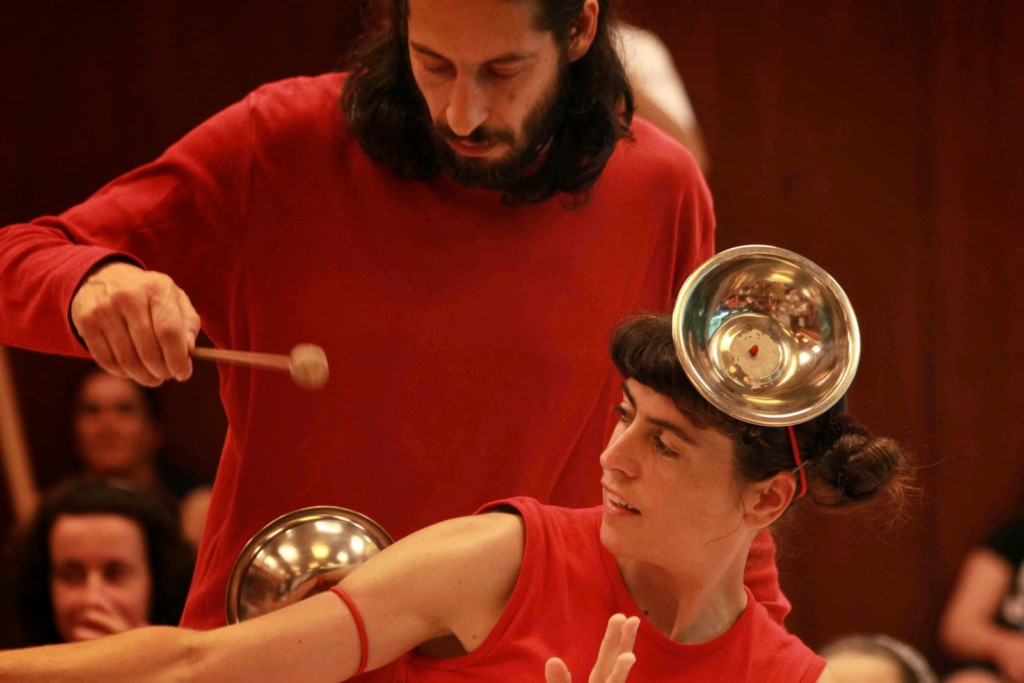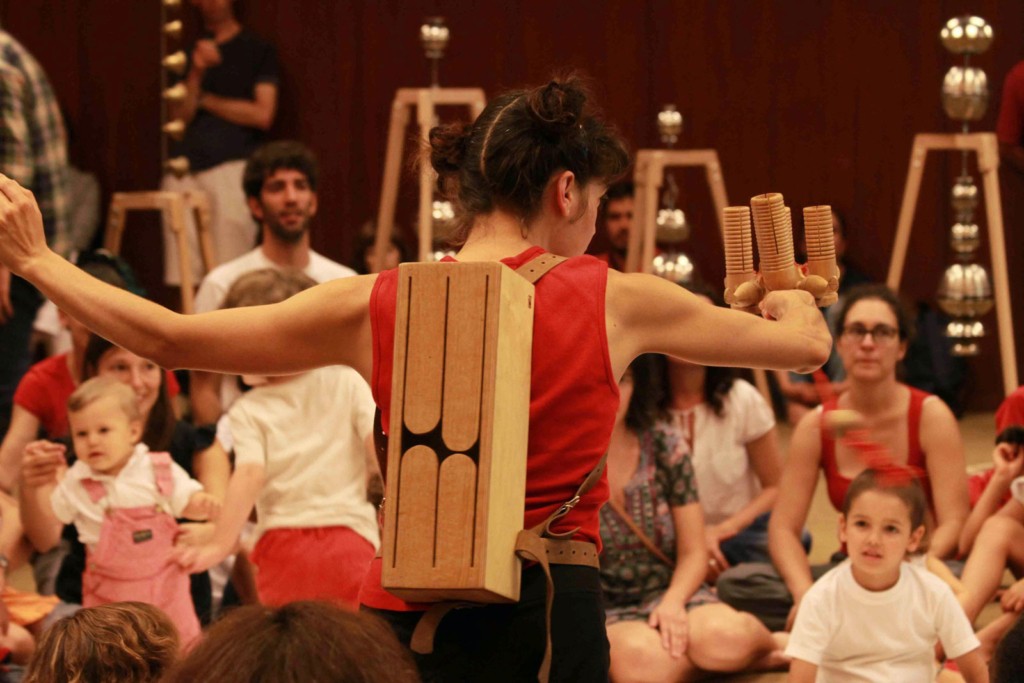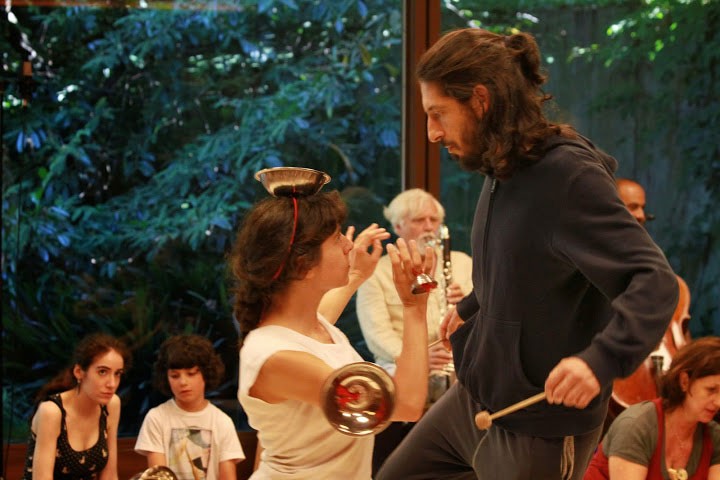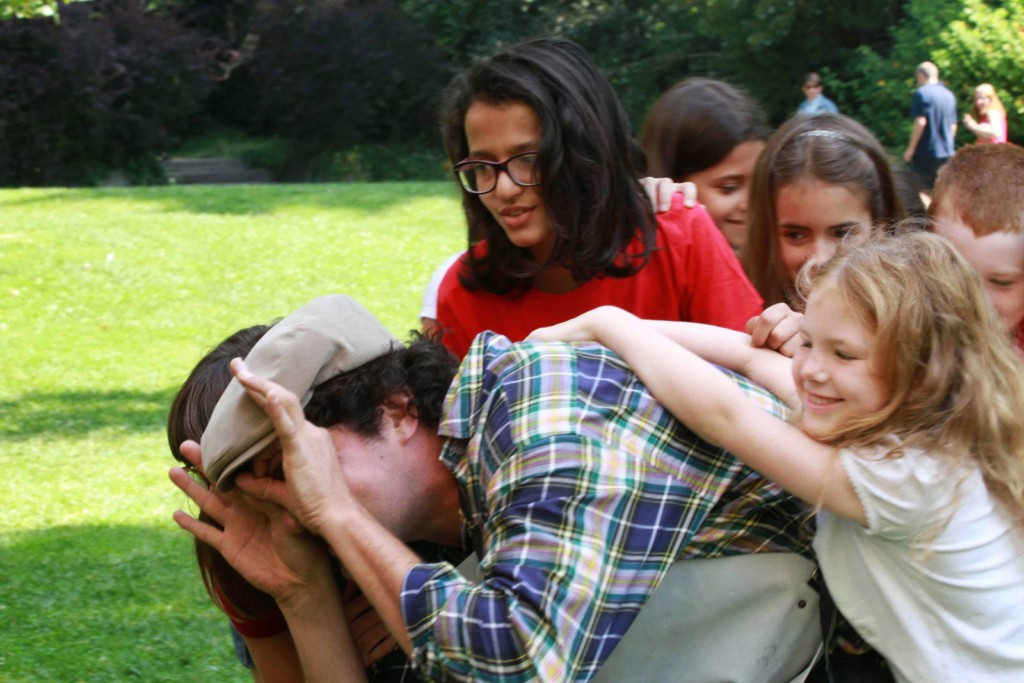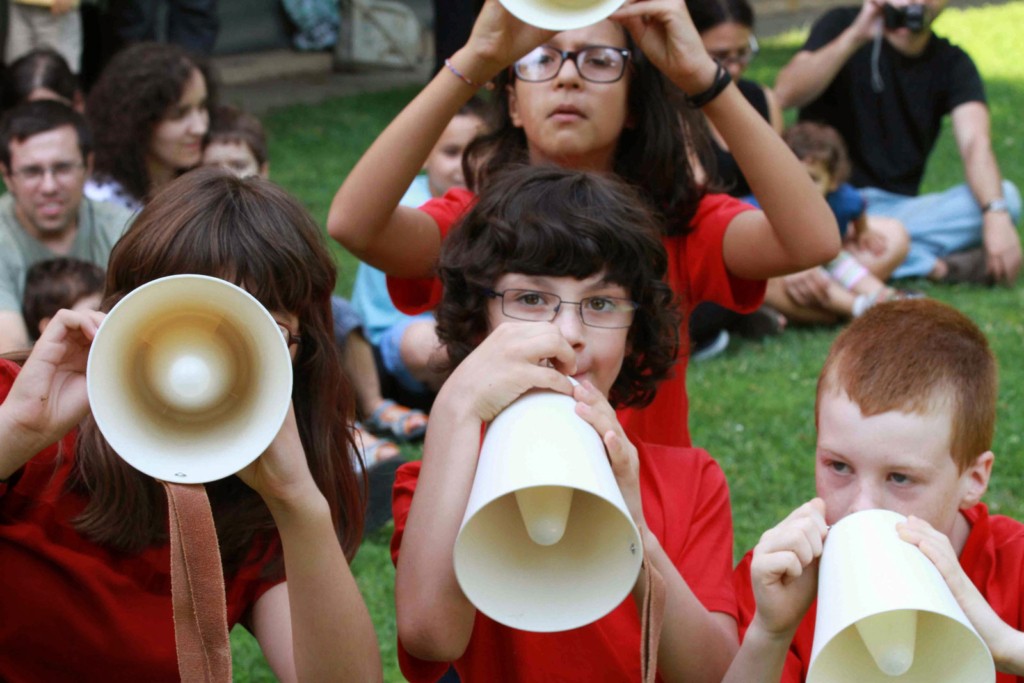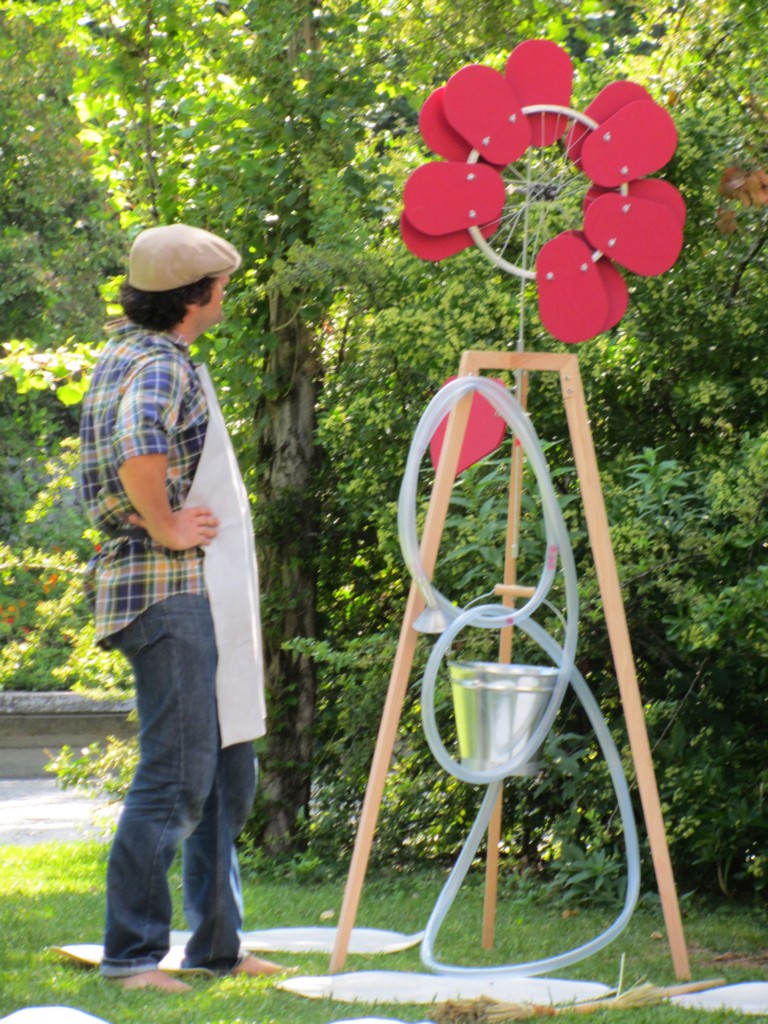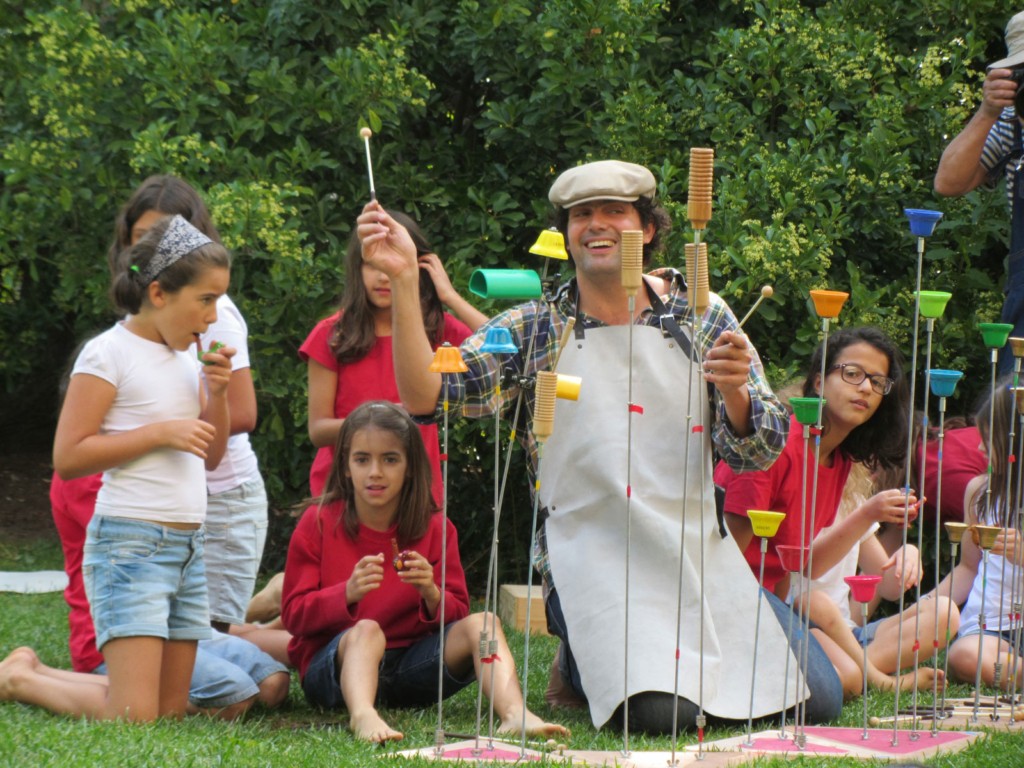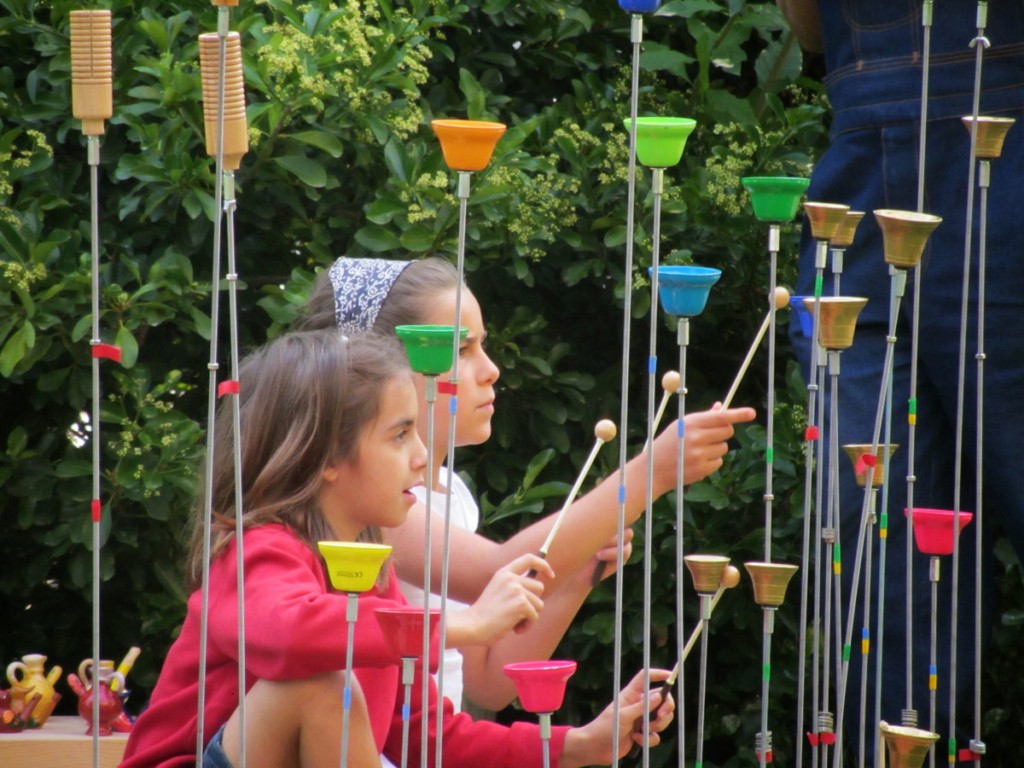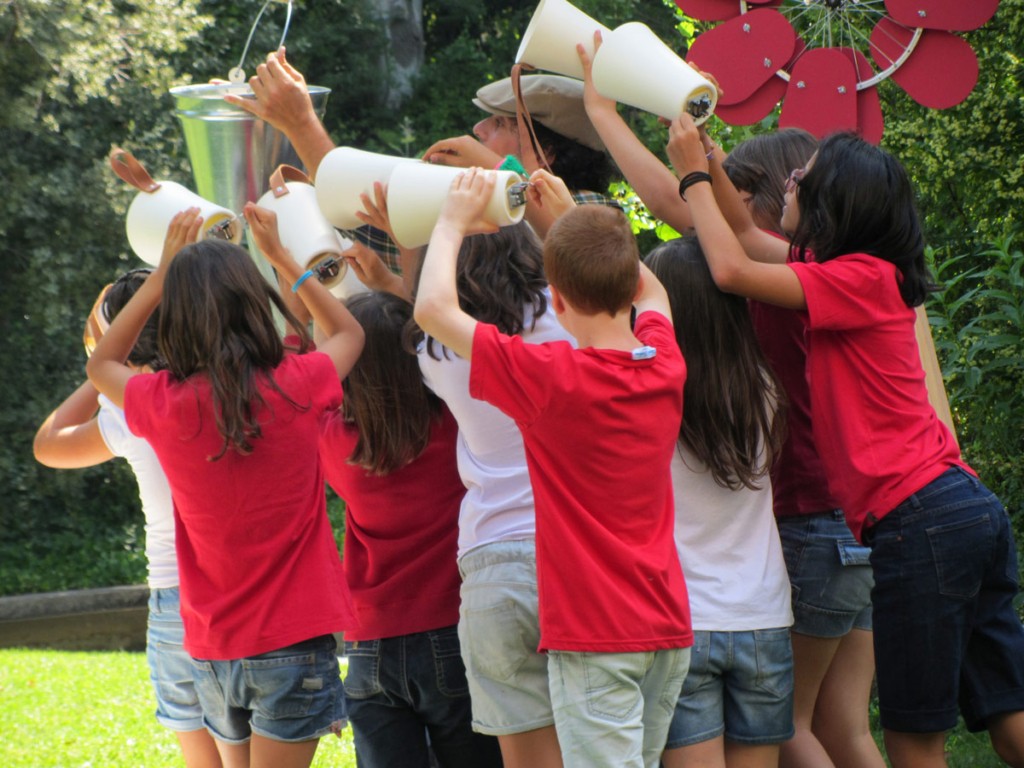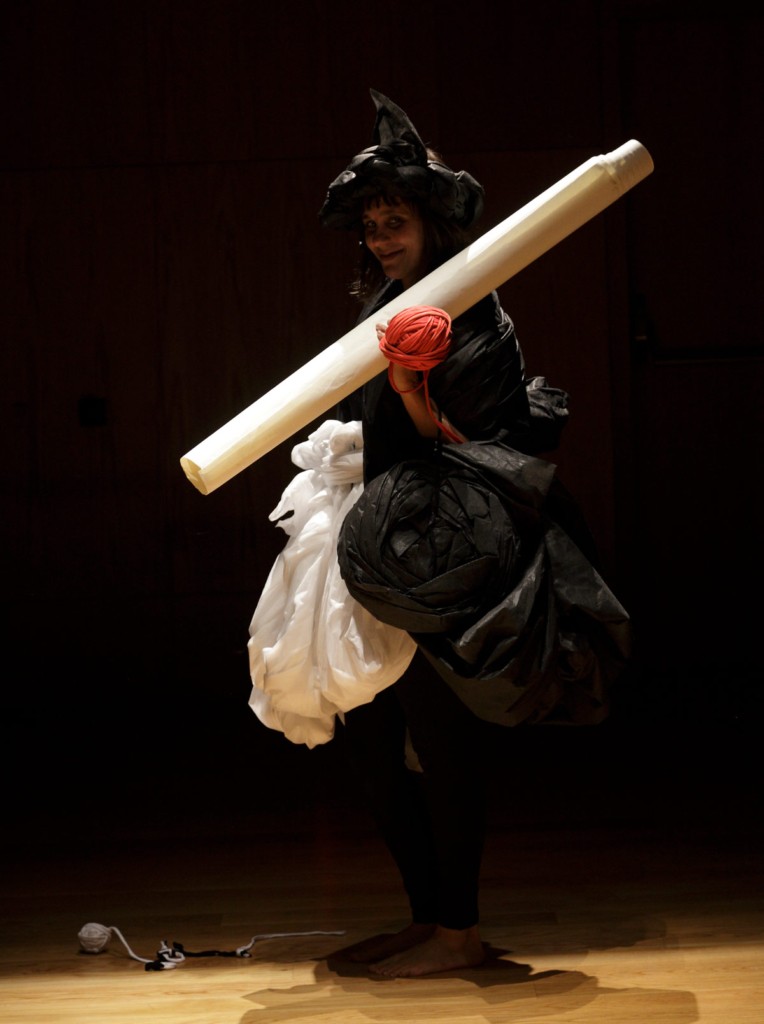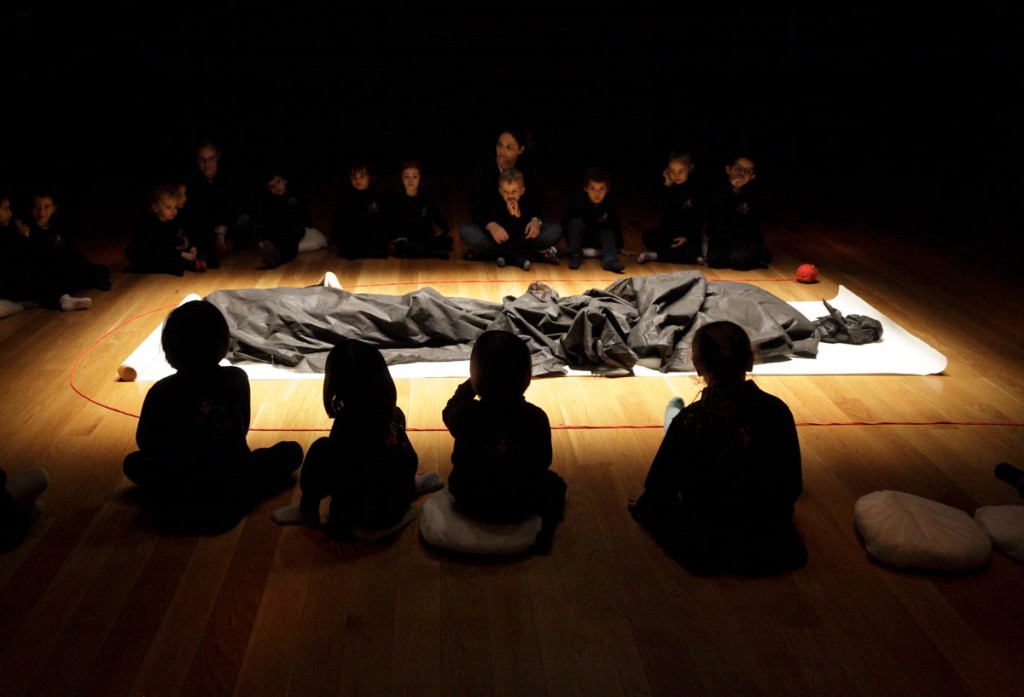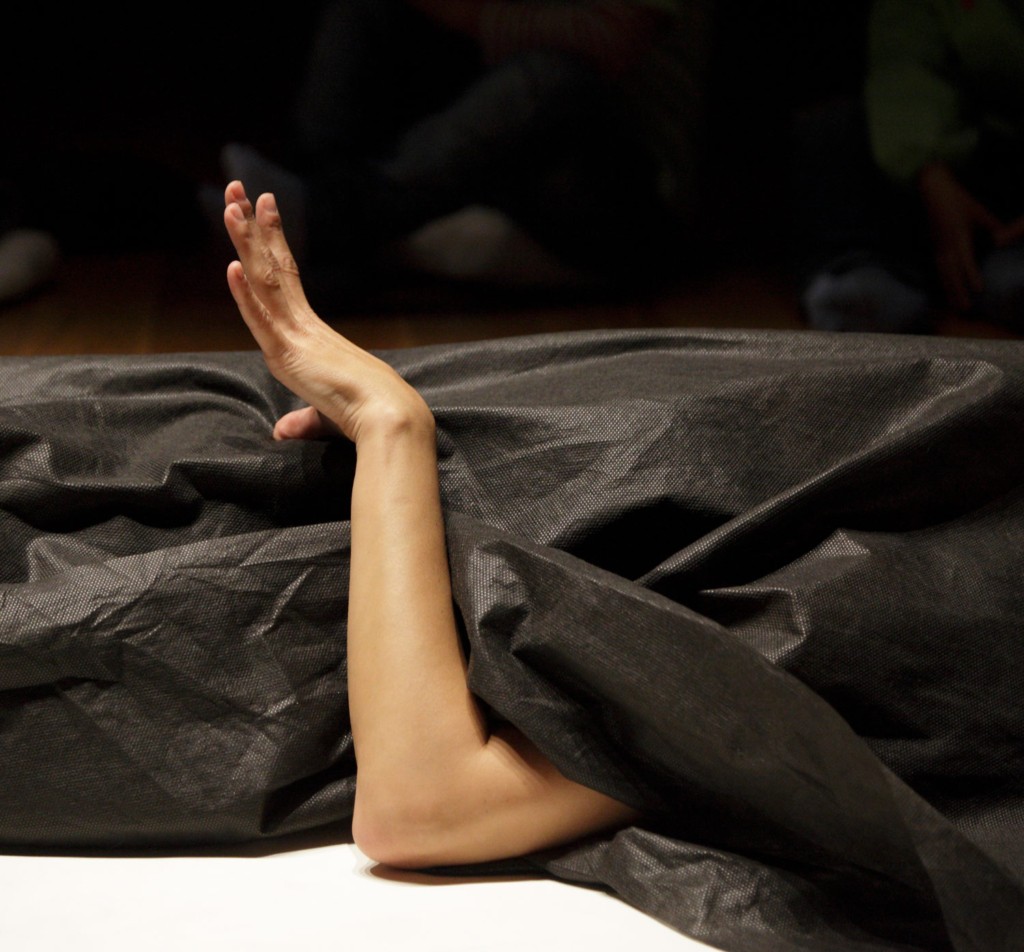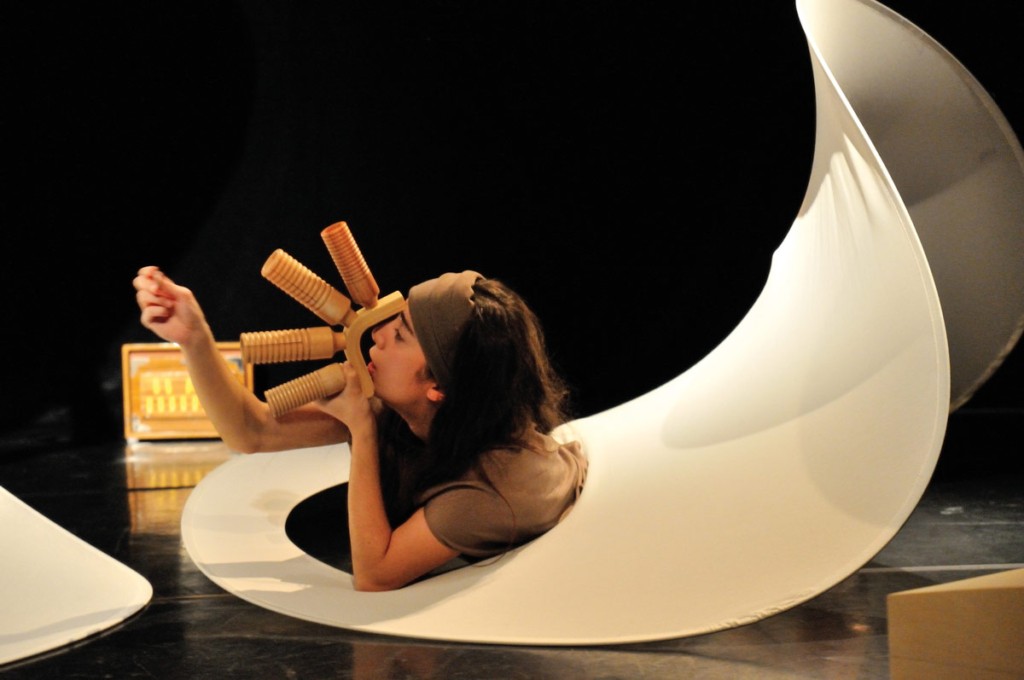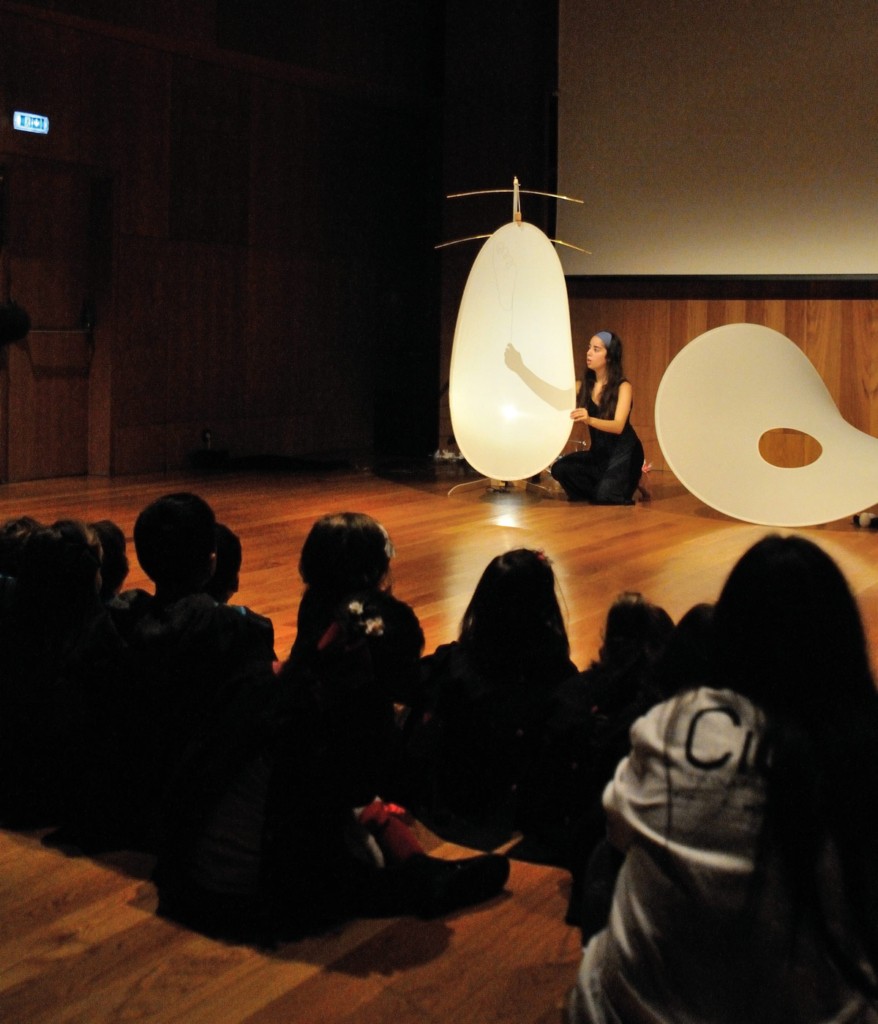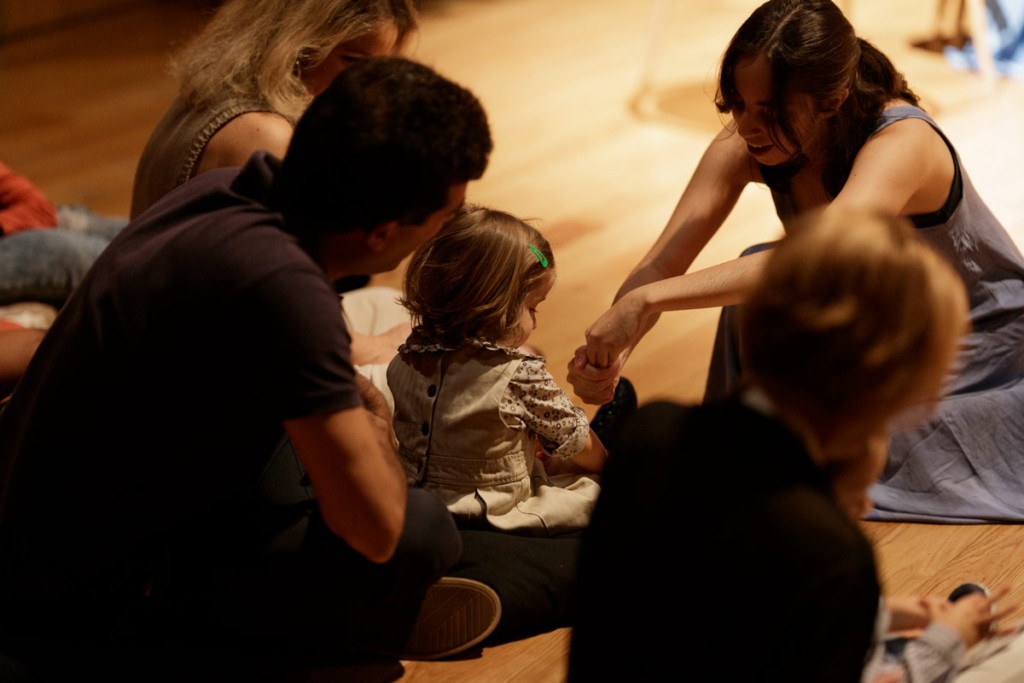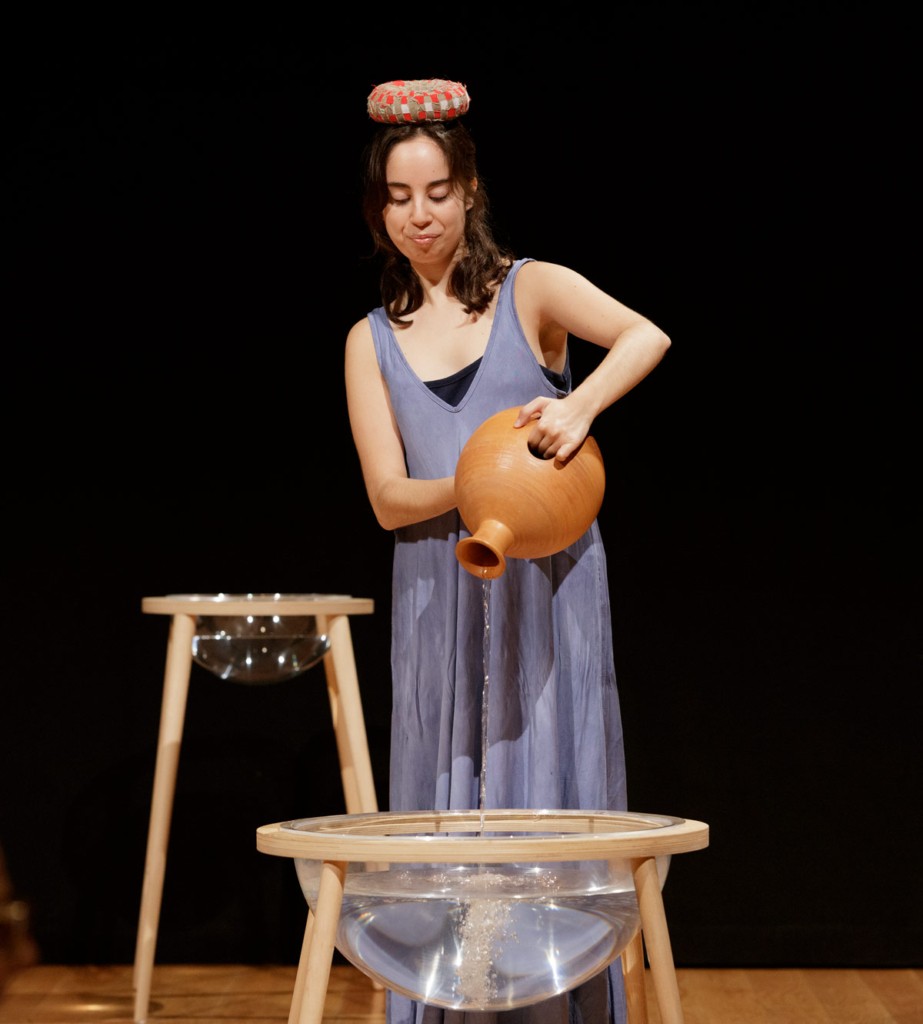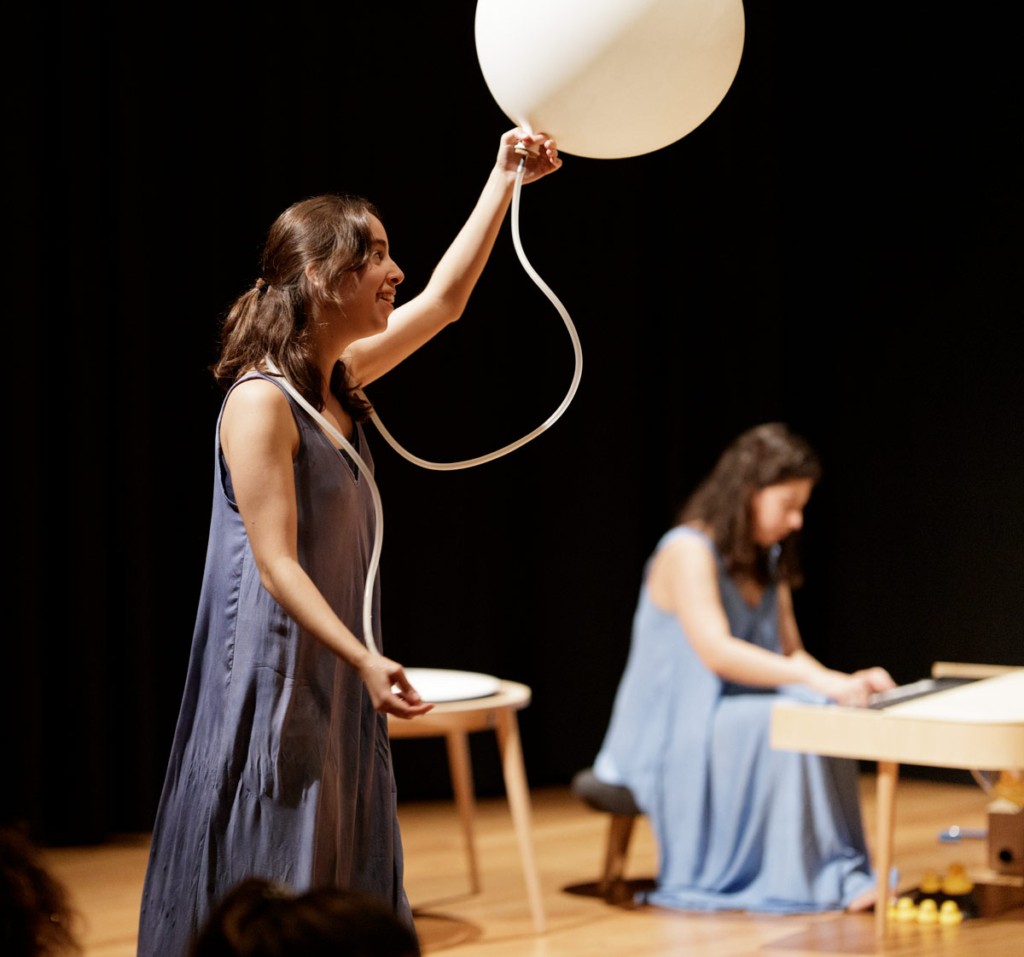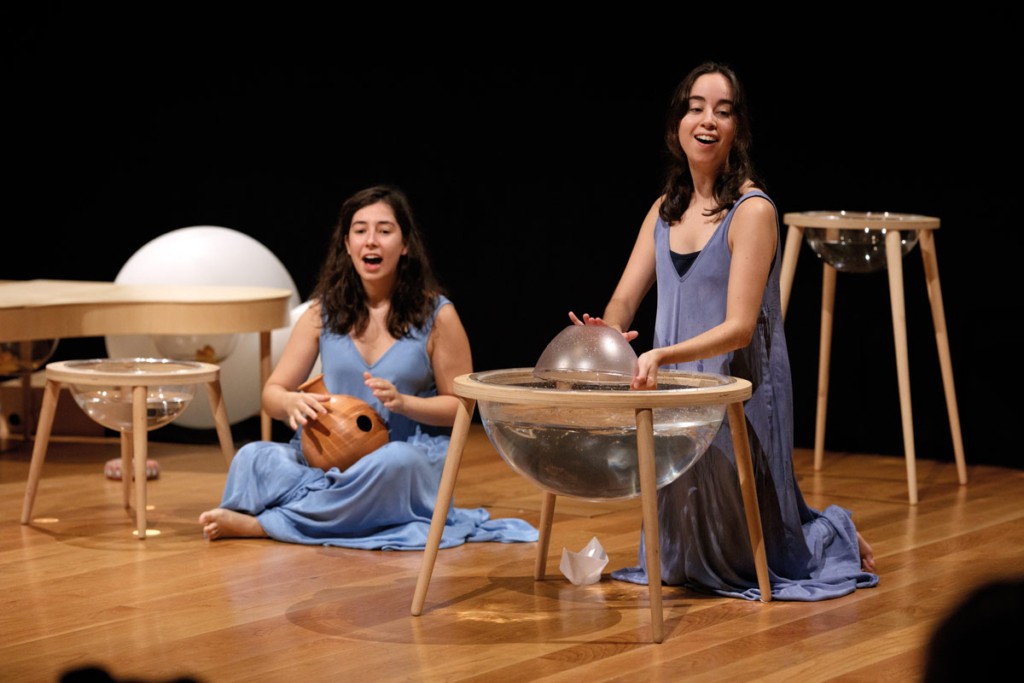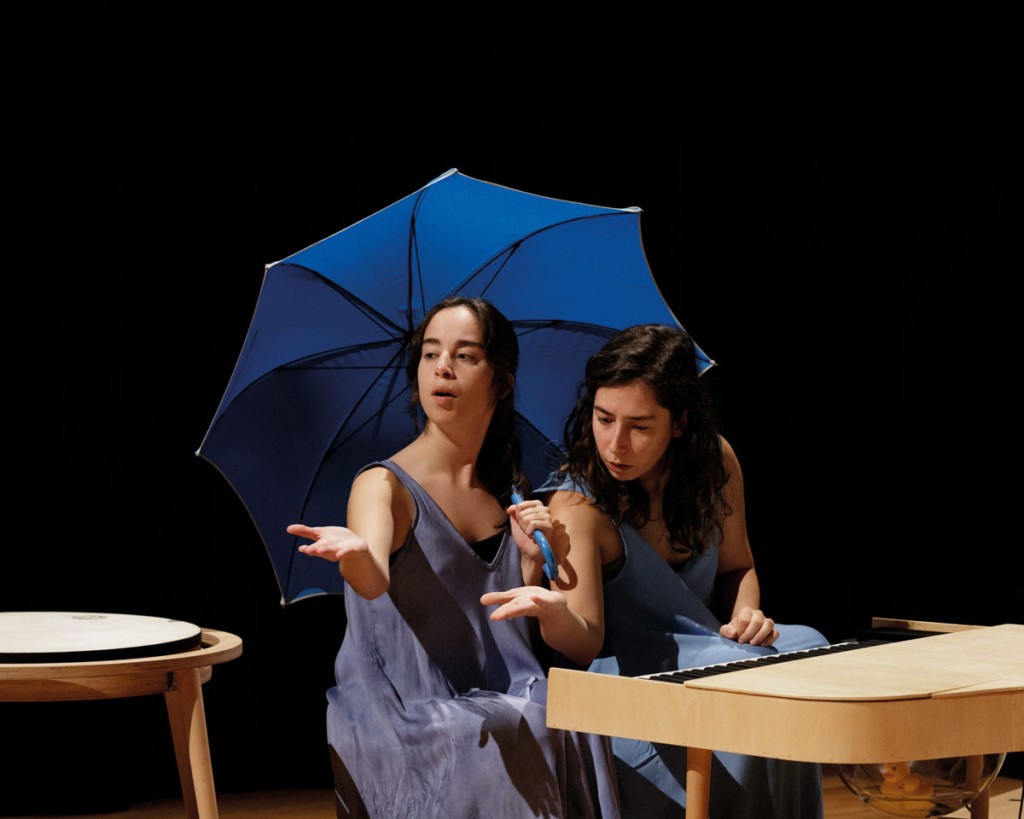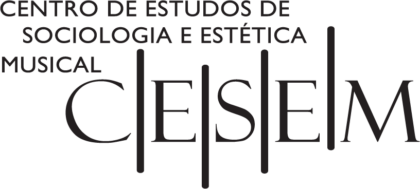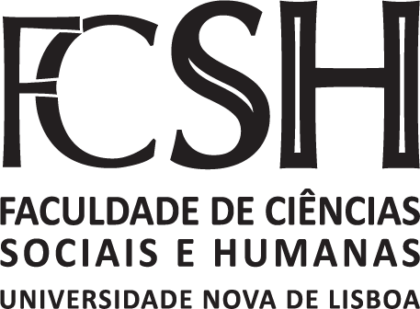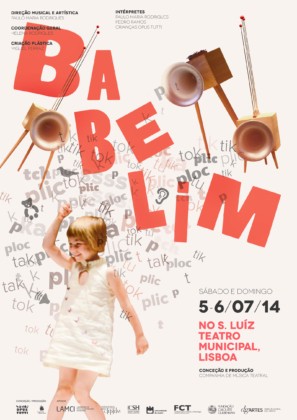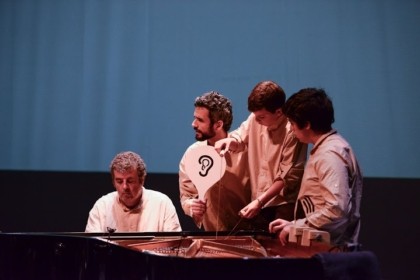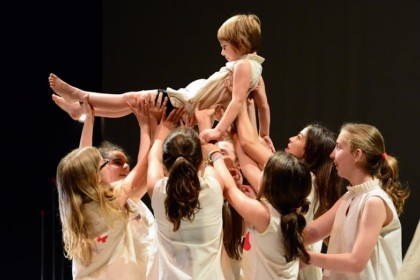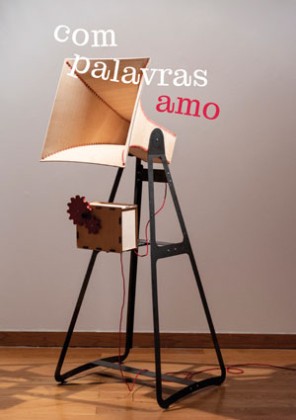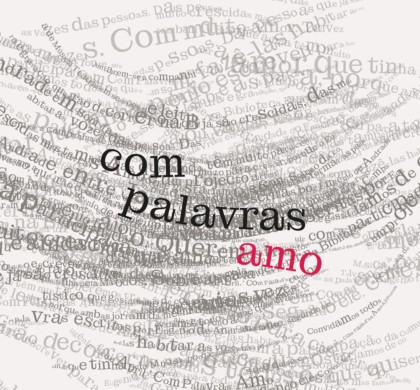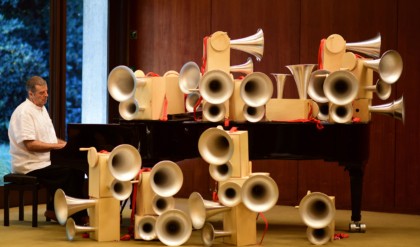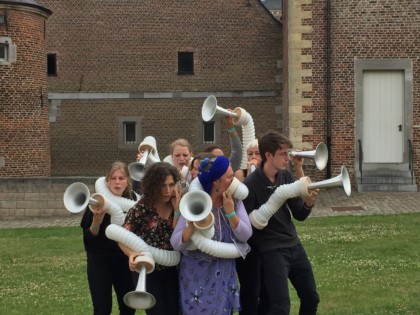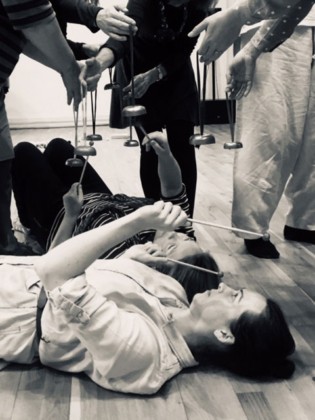As part of its work, Companhia de Música Teatral has developed a model which it refers to as “creating artistic-educational constellations”. By creating different relationships with music – listening, doing, creating, knowing – and exploring the different audible and artistic resources, new ways are being found of involving different types of audiences. PaPI (Portable Play to Play) is one of those constellations, joining artistic, educational and social ideas. Here, harmony and desire to communicate cohabit the world of childhood from the very beginning.
PaPI (Portable Play to Play) is a set of small musical-theatre pieces created in multidisciplinary, intergenerational artistic residences held at the Calouste Gulbenkian Foundation as part of the Opus Tutti project.
They are the result of a careful process, reflecting and studying, looking to set standards for good artistic practice for early childhood. They are put on by versatile artists, specifically trained to develop their artistic expression – based on music, dance and theatre – drawing on a very genuine human contact, and bound up in the idea that art and playfulness share common ground.
The idea is that it will help bring cultural institutions and communities closer together, and that the smallest among us can share these important moments in their lives with teachers and educational assistants as well as their families. The first “drafts” were presented in 2012 at the II International Colloquium of Art for Infancy and Social and Human Development, and subsequently each PaPI has followed its own path of refinement, which includes direct contact with children, namely at the O Roseiral Childcare Centre and the music guidance sessions at LAMCI, in Lisbon.
The PaPIs were specially designed to be able to tour easily around a wide variety of cultural venues, theatres, crèches and kindergartens.
In the year when Opus Tutti is Bearing Fruit, these pieces will start to tour various crèches and kindergartens in the area of Lisbon, with the support of the Calouste Gulbenkian Foundation. At the same time, the design of the travelling model has meant that other cultural and educational bodies have been able to get involved in the project and benefit from the fruits of its labors.
To this end, the PaPIs have been presented in cultural institutions and at the same time toured in crèches and kinder-gartens in their area. Reaching out to more children, more families, more professionals, more places and helping weave relationships with the threads of art. Seeking to promote interaction between adults and children by giving a first taste of the arts, these pieces are also associated with different sound environments/tactile universes. At the end of each PaPI, parents, teachers, educational assistants and children, are invited to play with the props, exploring their sounds, colours and shapes.
PaPI leaves something to remember: at the end of each show there is always time to revisit a song, a rhyme, a dance, a game, a trick, and, therefore, to stimulate the senses and communication amongst the little ones. And, in this manner the space will reverberate with harmony and desire to communicate.

